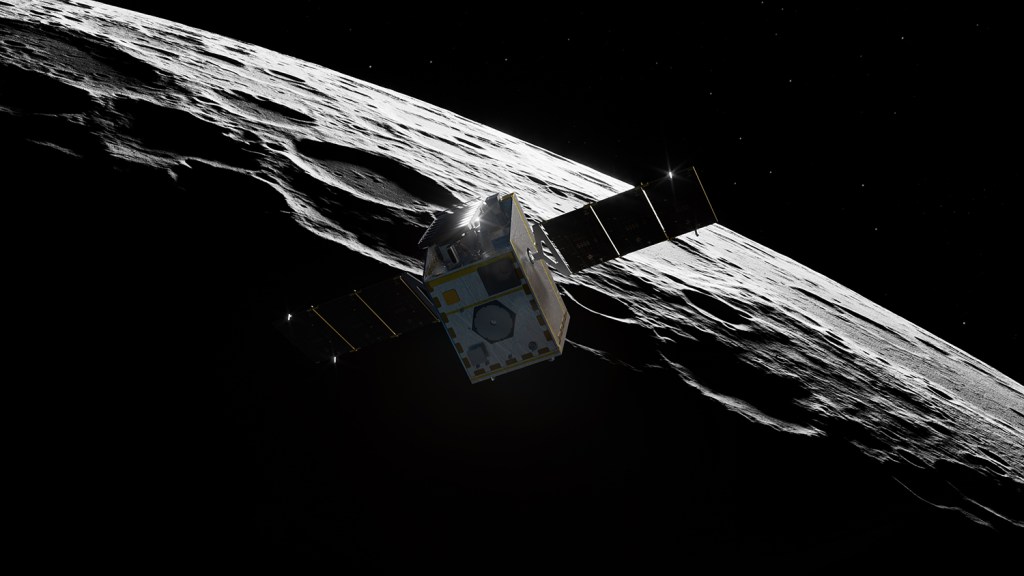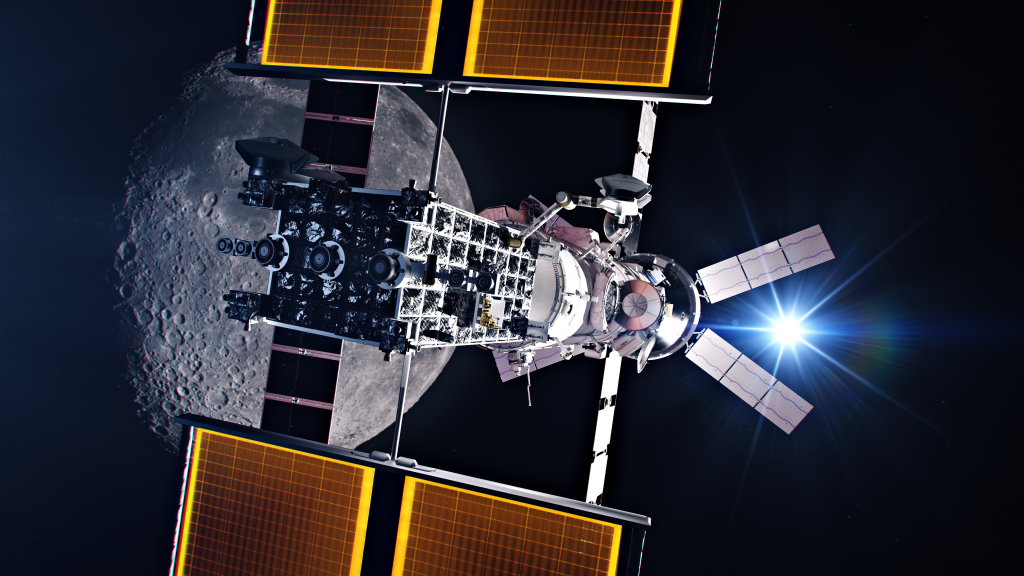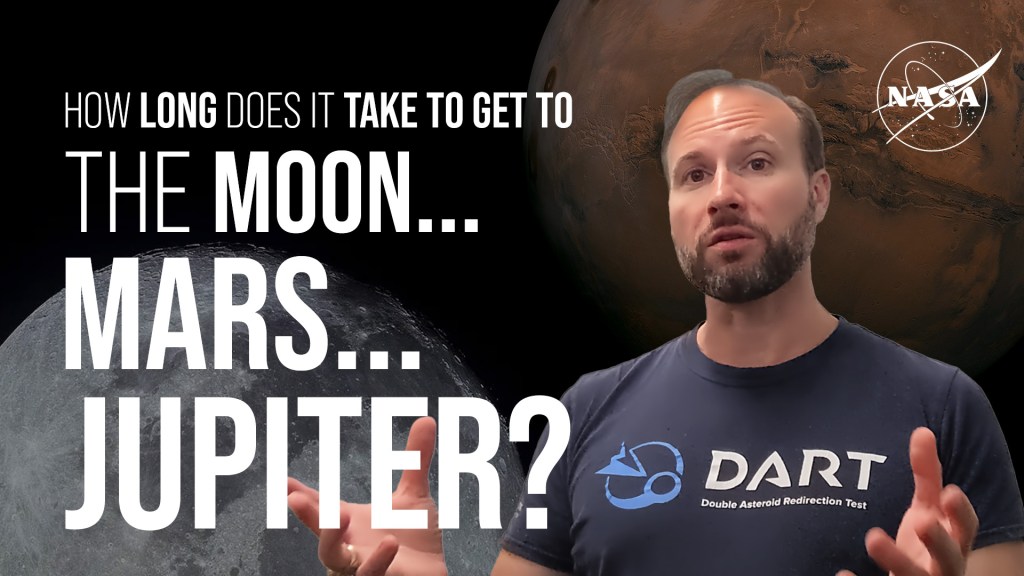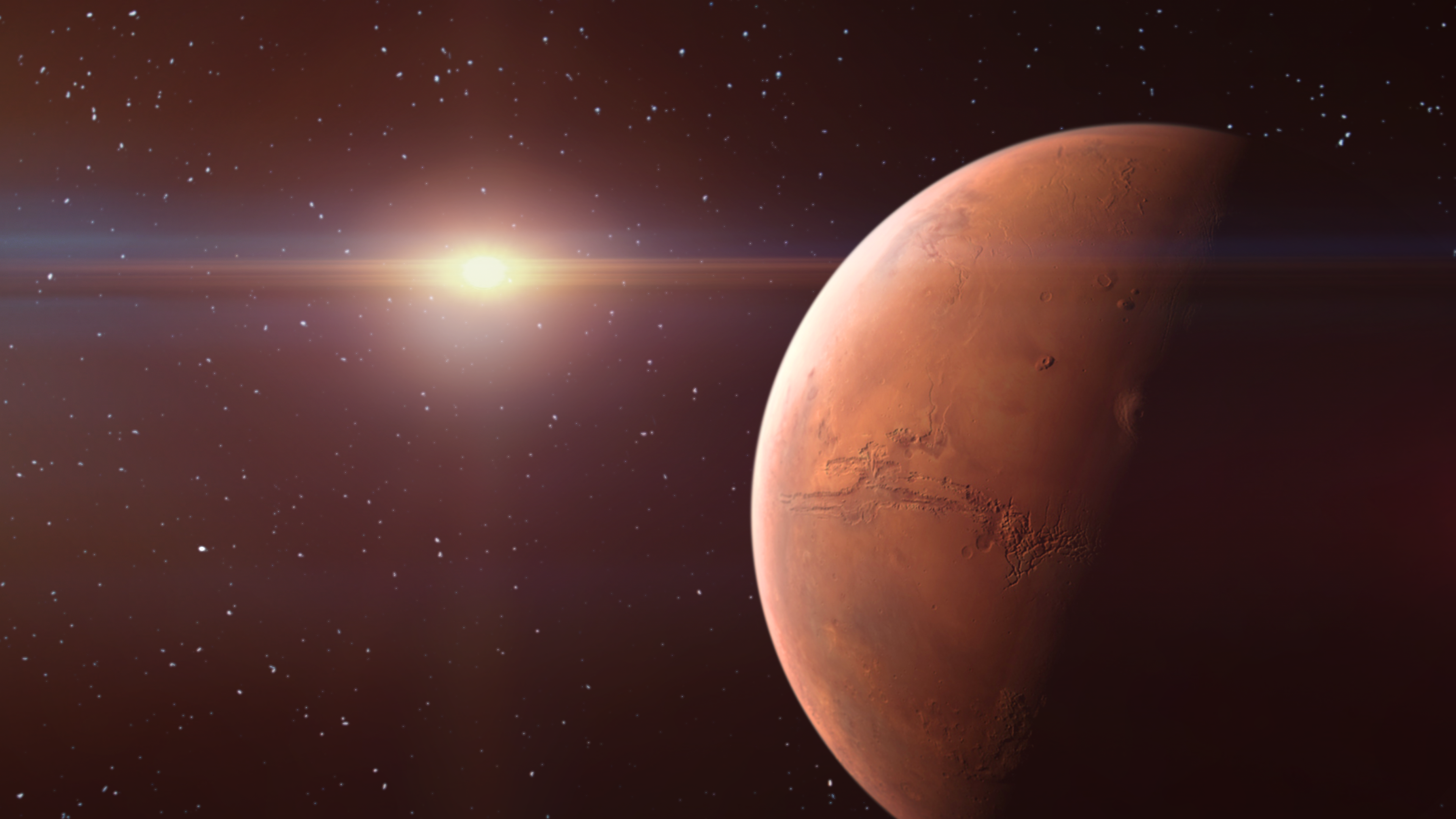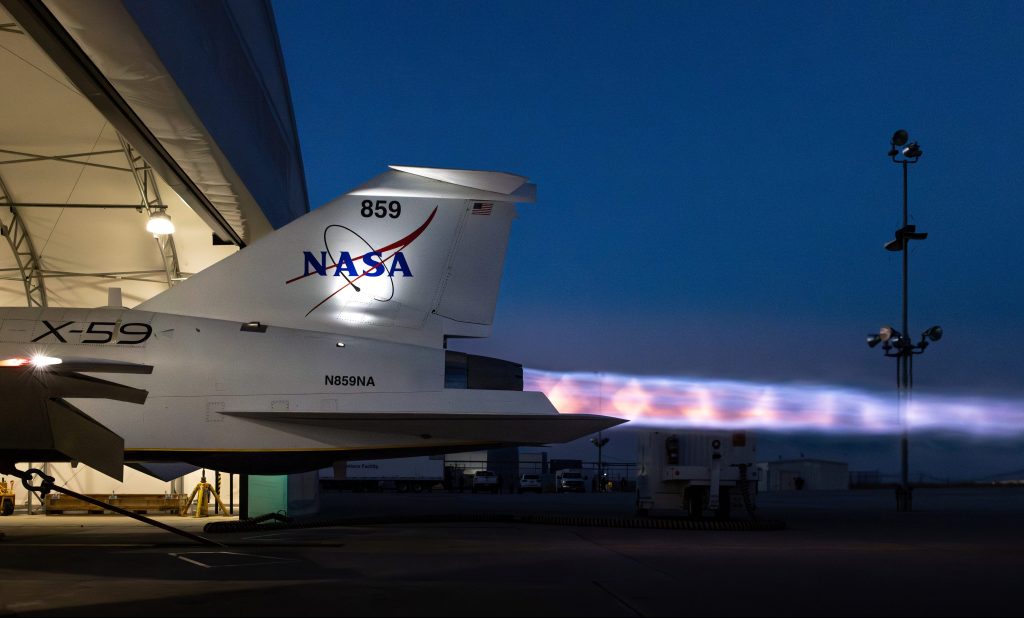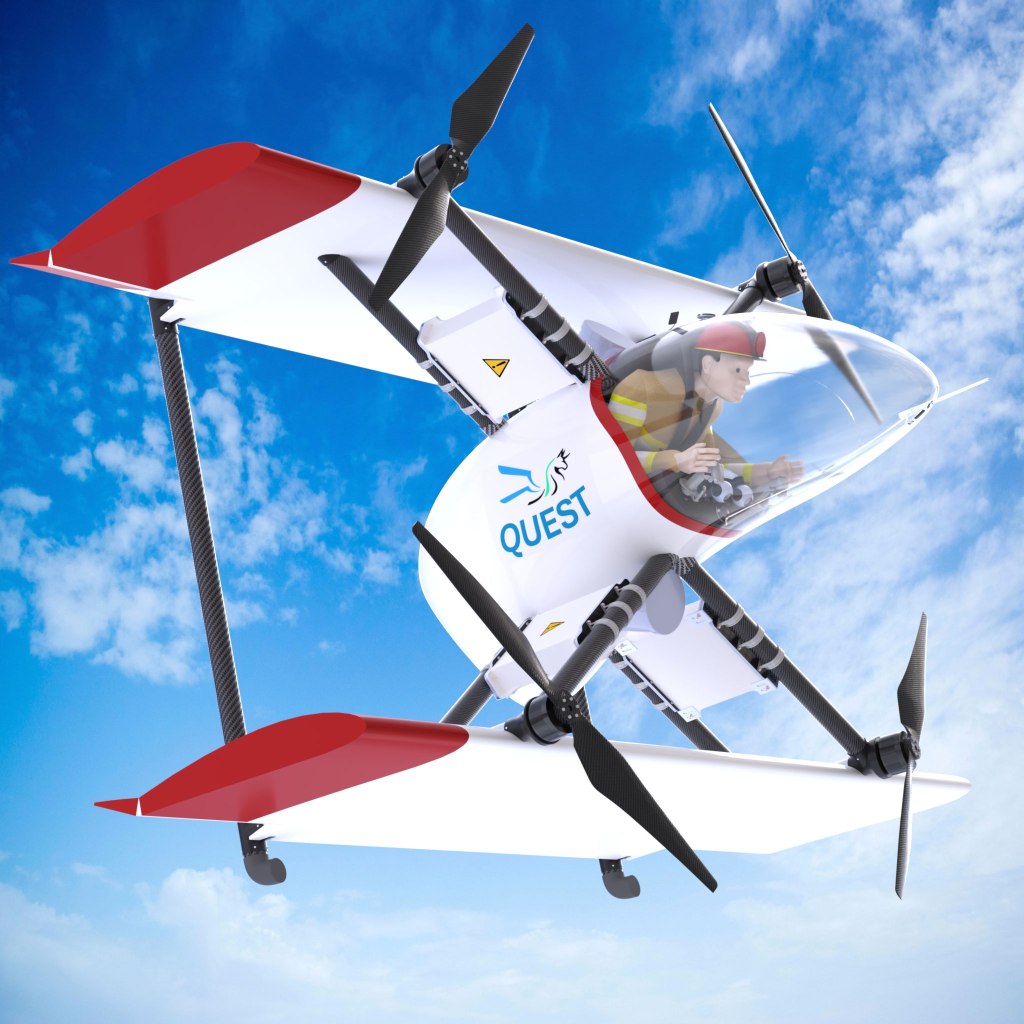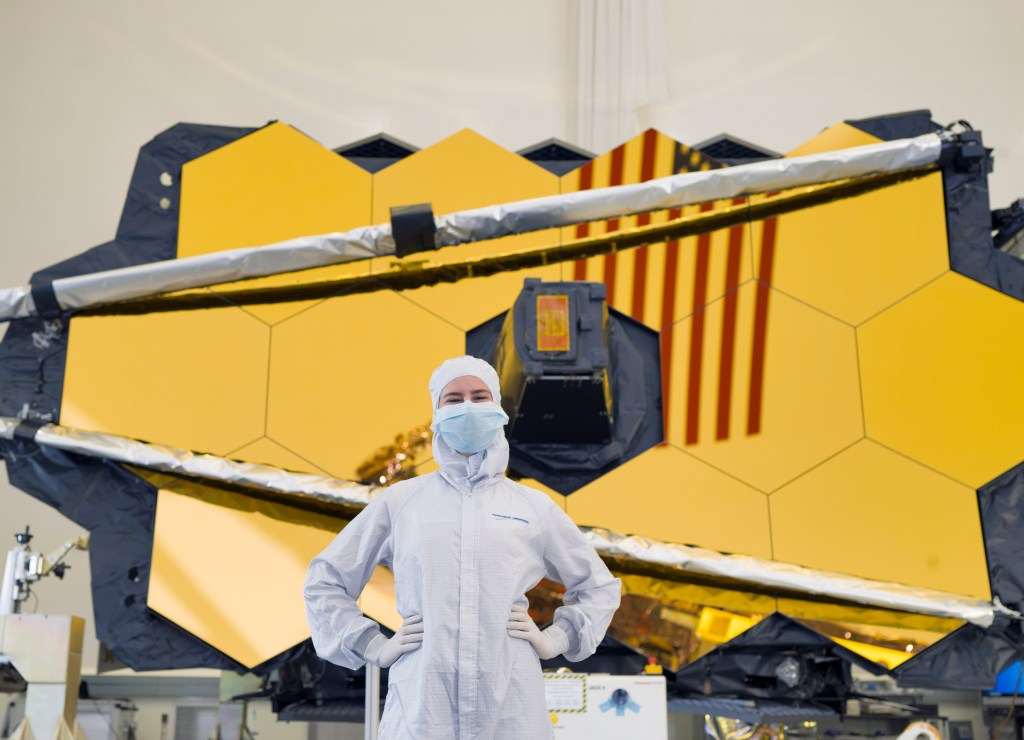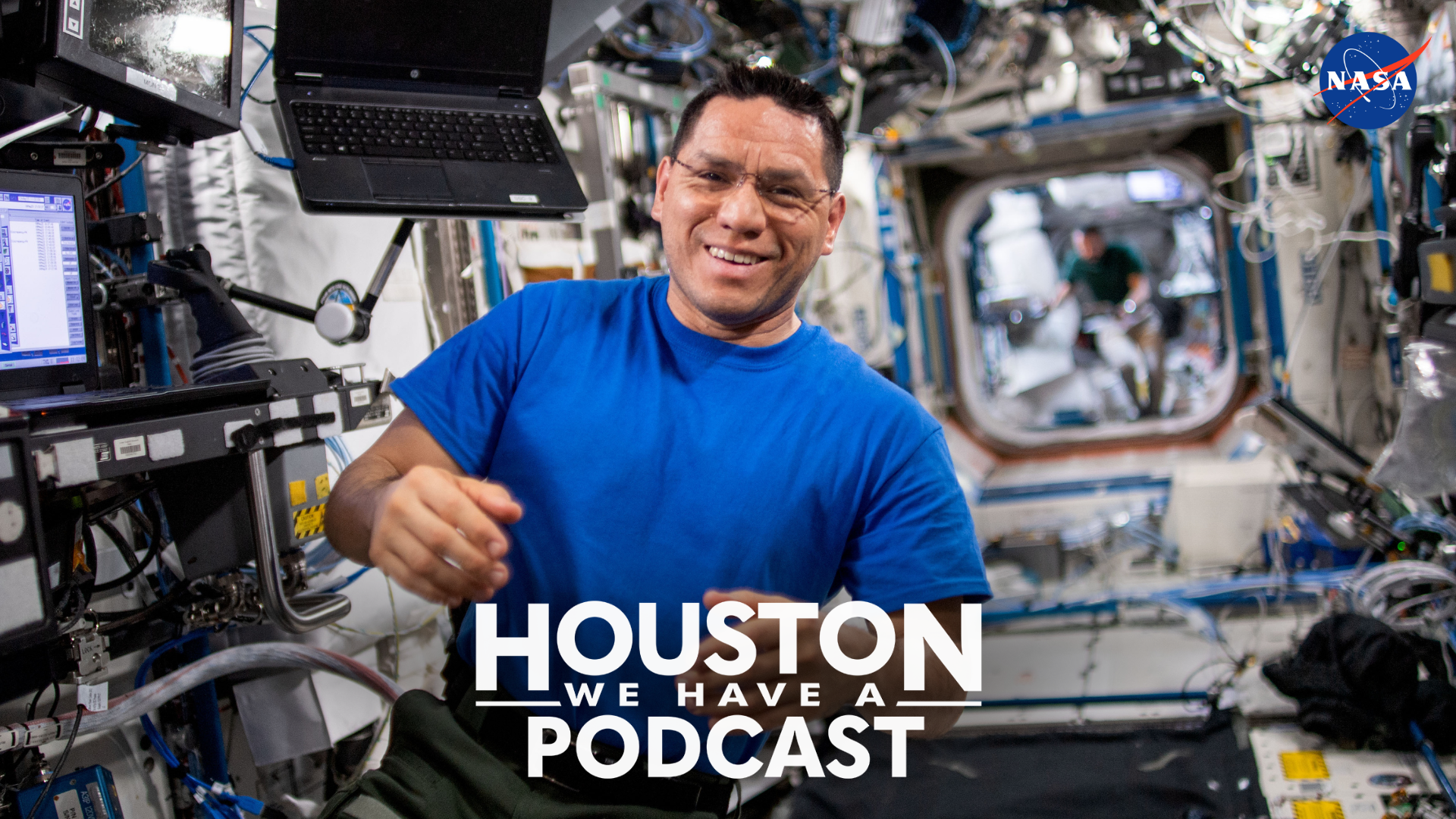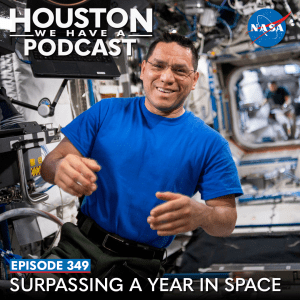
From Earth orbit to the Moon and Mars, explore the world of human spaceflight with NASA each week on the official podcast of the Johnson Space Center in Houston, Texas. Listen to in-depth conversations with the astronauts, scientists and engineers who make it possible.
On episode 349, NASA astronaut Frank Rubio reflects on his record-breaking 371 days aboard the International Space Station. This episode was recorded on May 22, 2024.
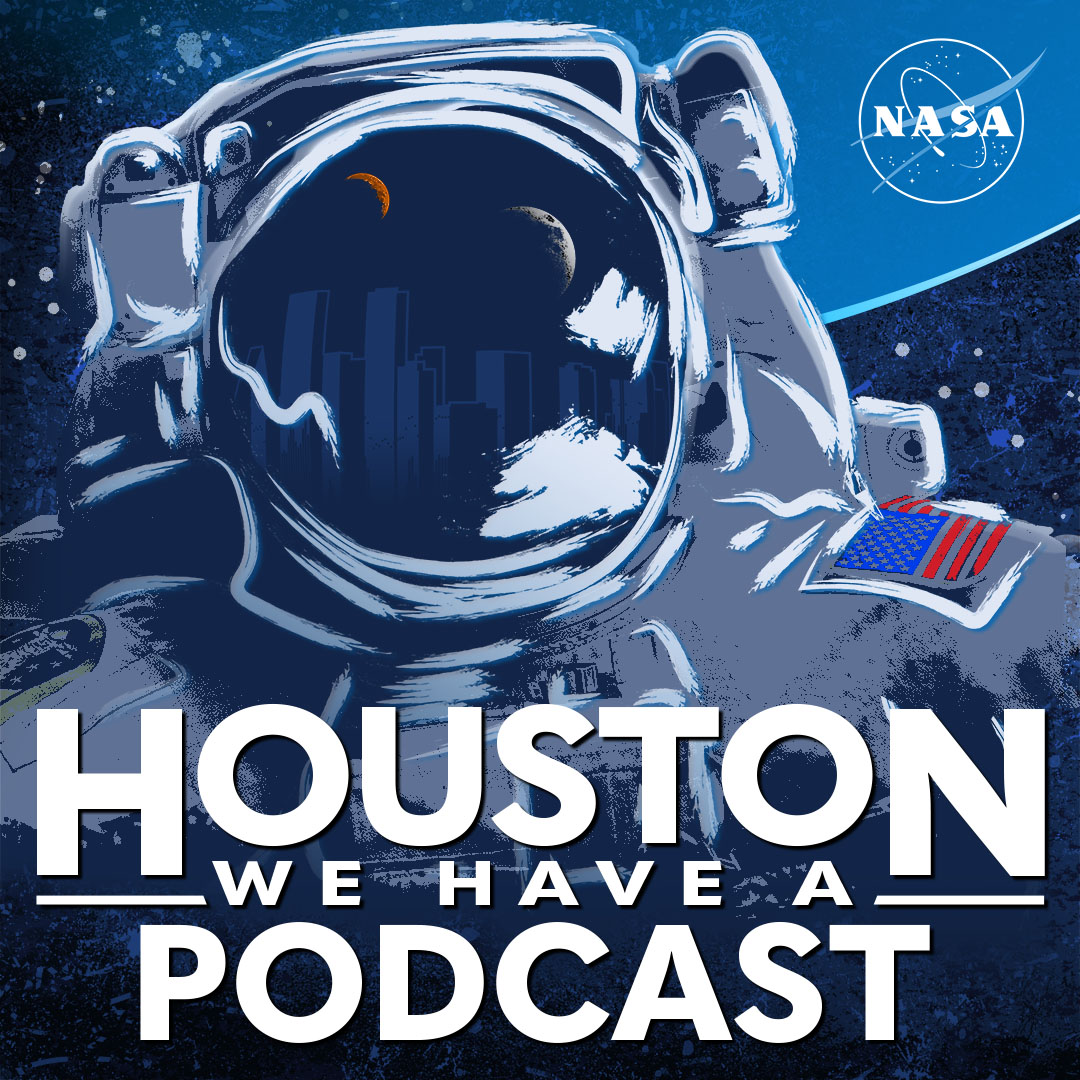
Transcript
Host (Courtney Beasley): Houston, we have a podcast! Welcome to the official podcast of the NASA Johnson Space Center, Episode 349, “Surpassing a Year in Space.” I’m Courtney Beasley, and I’ll be your host today. On this podcast, we bring you the experts, scientists, engineers, and astronauts, all to let you know what’s going on in the world of human spaceflight and more. On this episode, we’re chatting with NASA astronaut Frank Rubio, who launched on his first spaceflight September 21, 2022, aboard a Russian Soyuz spacecraft with cosmonaut Sergey Prokopyev and Dmitri Petelin. After spending an American record-breaking 371 days in space, Rubio and his crewmates made a safe parachute-assisted landing September 27, 2023.
Rubio’s spaceflight is the longest single spaceflight by a U.S. astronaut, breaking the record previously held at 355 days by NASA astronaut Mark Vande Hei. During his mission, Rubio completed approximately 5,936 orbits in a journey of more than 157 million miles, which is roughly the equivalent of 328 trips to the Moon and back. He witnessed the arrival of 15 visiting spacecraft and the departure of 14 visiting spacecraft representing crewed and uncrewed cargo missions. During his record-breaking mission, Rubio spent many hours on scientific activities aboard the space station, conducting a variety of tasks ranging from plant research to physical sciences studies. Prior to joining NASA, the Florida native graduated from the U.S. Military Academy in 1998 and earned a Doctor of Medicine from Uniformed Services University of the Health Sciences in 2010. And before attending medical school, he served as a UH-60 Black Hawk helicopter pilot and flew more than 1,100 hours, including more than 600 hours of combat and imminent danger time during deployments to Bosnia, Afghanistan, and Iraq.
Rubio is a board-certified family physician and flight surgeon. At the time of his selection, he was serving in the 10th Special Forces Group in Fort Carson, Colorado. And here to tell us more about his mission is NASA astronaut Frank Rubio.
[Music]
Host: Frank, thank you so much for coming on Houston We Have a Podcast today.
Frank Rubio: Hey, Courtney, good morning. Thank you so much for having me. This is awesome to be here with you.
Host: Of course. So you obviously spent more than a year living and working in space, and you’ve now been back home for more than half a year. What’s it been like to be back?
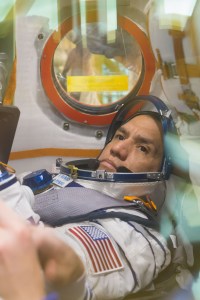
Frank Rubio: It’s been fantastic. You know, the reality is, you know, while it’s an incredible honor to be up there representing our nation, humanity, and it’s such a privilege, right? You’re getting to do something that less than a thousand people have ever done. And for my crew and I, we got to do something that only four humans have ever done, right, which is spend a full year in space. So you don’t want to lose sight of what a privilege and honor that is, but that entire time you’re missing your family, you’re missing your loved ones. And for me, especially that year was kind of hard because I missed some major milestones, right? My son’s entire senior year. I was never home for a single day of that. You know, military families do this all the time. Other professions do this all the time, but it doesn’t make it any less difficult to be going through that. So while it feels like an incredible privilege, really towards the end, you’re pretty much ready to come home and then coming home and being with my family, being with loved ones and really being able to do fun things again was awesome. And so, yeah, I’ve really enjoyed the last few months.
Host: And what was it like right when you got back? Did it take a while to get back into your Earth routines, or was it pretty natural?
Frank Rubio: Well, so the first couple of days, honestly, you’re a little bit debilitated, right? So your vestibular system has gotten used to being in space. And so the first couple days you get to space, you’re actually not fully functional. Again, those semicircular canals are meant to be in gravity and 1G. But you adapt. And especially if you’re there for a long time, that becomes your normal. And so when you come back, you know, that first 24 hours especially, there’s a lot of vomiting, a lot of walking sideways when you’re meant to walk straight. And for a lot of people, they can’t even walk. And so it just takes a little bit for your body to readjust to being in a 1G. I was very fortunate that I actually adapted really quickly. Ans so within eight hours, I was feeling much better. And by 24 hours, I was almost feeling normal. It takes about two weeks to start saying like, “Oh, okay, I’m back.” And honestly, at two months I thought I was fully functional and was 100%. But now looking back, you know, at the seven-month mark, the differences in strength and coordination and is quite stark. And so I think it really takes about six full months to get back to your normal self of what you were before flight. But very quickly you readapt, and you just become more and more functional as time goes.
Host: Well, let’s take it all the way back to the beginning. What was launch like? What was it like to arrive at the station?
Frank Rubio: Well, it was incredible, right? So I think launch is what you dream of when you dream of being an astronaut, just getting on a rocket and launching to space. It was everything I expected. Everything goes by a little quicker than you think. Before you know it, you’re strapped in and you’re ready to go. Then the actual launch was a little more peaceful than I expected. But two-and-a-half hours later, you’re docking to the space station. And for me, it was an incredible blessing that I had three of my really good friends there to greet me. So Kjell (Lindgren) and I, we go to church together, our families were friends, you know, and he was there. Jessica Watkins and Bob Hines were classmates, and we actually were in the same training group. So we spent, you know, two years with each other. And so also two of my best friends. And so having the three of them there to greet me was pretty special, right? And of course, it opens you up to them messing with you a little more because you are good friends. But it just makes it more fun. So yeah, that was pretty neat. And again, it takes about 24 to 48 hours to adapt, for some people up to a week. But before you know it, you’re performing science and maintenance on the space station, which, honestly, feels surreal for the first two months that you’re there.
Host: So, can you talk a little bit about a day in the life on the station from waking up to going to sleep? What did you do between then?

Frank Rubio: Yeah, you know, every day is different, and yet every day is the same, right? And so your schedule looks pretty much exactly the same for the most part. You know, most of us start the workday at around 7:30. And so I would wake up at 6:30, do some hygiene, get some breakfast, and kind of just get ready for the day. And then at 7:15 or 7:30, we have our first meeting with the ground team. And then you work basically until about 7:00 p.m. at night. In between, you’ll have about an hour for lunch and anywhere from 90 minutes to two hours of exercise time. And the rest of the time, it just depends on what the ground team needs for you to do. So you’re either conducting science, you’re doing maintenance or you’re preparing for spacewalks. Now spacewalk days look totally different, right, then you’re getting up at 5:00 a.m., you’re getting in a suit by about 7:30 or 8:00 a.m. heading out the hatch at about 1:00 p.m. and then you do a six-to-eight-hour spacewalk and you come back in. So those days you start at about 5:00 a.m. and you really don’t end till about midnight. But you’re also doing an incredibly amazing thing. And so they go quicker than you would think. So back to the schedule is pretty much the exact same thing every day. But you’re doing, I mean, we did over, 400 experiments in the year that I was there. So every day you’re touching and doing something very different from the day prior.
Host: Everyone is always so interested to know what it’s like to sleep in space. What were your sleeping arrangements like?
Frank Rubio: Yeah, so we all have a crew quarters, which I describe as a phone booth, basically. For those that are old enough to remember what a phone booth was like, it’s about the same amount of space. And we each got one of those. I actually had the starboard crew quarters my crew quarters for an entire year. And it’s basically a circle of phone booths, right? And so one of us is on the right, one of us is on the left, one’s above and one’s below. But once you actually get inside and close the door, they all look exactly the same, and they actually feel exactly the same. So you don’t feel like you’re standing or laying down or hanging from the ceiling. It just is the exact same feeling. You just have to readjust your expectations before you open the door and because you get so used to coming out of the right side that if for whatever reason you end up going in the overhead crew quarters, you come out, you’re actually a little bit disoriented cause you’re just facing the wrong way than you expected. And so inside the crew quarters, most of us have our sleeping bag. We will Velcro it and bungee it to the wall. And honestly all it serves to do is keep you in place, right? Because if you were just a float in the crew quarters, airflow is something that we have to create basically because you don’t have convection. And so you can’t count on hot air rising to move for air movement. And so we have fans that do that. And so if you were to just asleep, kind of without a sleeping bag, the air current would catch you and just kind of move you around all night. Which some people try that and enjoy it. I would always zip myself in and you just kind of float in your sleeping bag. Honestly, some of the best sleep I’ve had as an adult, so in the past 25 years, you know, especially as you get older, you get little neck pains or back pains and all that disappears because you’re just floating. You don’t need a pillow cause your head doesn’t weigh anything. And so it just kind of floats there. It doesn’t bob or anything like that. It’s almost hard to imagine until you experience it. But if you can imagine completely offloaded sleep, you can start to think, oh man, that would actually be feel pretty great.
Host: That does sound really nice. Well, I’m glad you slept well.
Frank Rubio: Yeah, thank you.
Host: I’ve heard that some people, it takes some time to adjust, so that’s nice that it seemed to be pretty restful.
Frank Rubio: Yeah, you know, I will say the first couple of nights you definitely miss the pressure of laying on a bed, you just yearn for almost a coziness that your bed and your sheets and your pillow provide, but after about three to four days, that goes away, and you just get used to your new reality.
Host: We get to see these really cool pictures from the space station of crews eating together. And I know that food is such a form of community here on Earth. Did you find that to be the same on the station?
Frank Rubio: Absolutely. Yeah. It’s actually some of my favorite memories in space were just that, you know, the entire crew in Node 1 sharing food, we almost all fly special items that we specifically fly to share with our crewmates, right? We just know that that’s going to be something special. And especially those of us from different backgrounds, right? Whether you’re Hispanic or Asian or whatever, you’ll try to bring something that represents your culture. The cosmonauts do the same thing. And, you know, they will come over to our side or we’ll go over to their side and almost every weekend, we will break bread together. And those are our very special moments. Often if we have the time, we’ll watch a movie together and then we’ll break out the snack foods for those, you know. And unfortunately, popcorn isn’t really a thing because once you open those bags, it just flies and floats everywhere and can clog the filtration systems. So anything that’s crumby, we try not to take to space. But you find other ways to kind of have little snacks. So gummy bears are very popular while you’re watching a movie and, you know, you’ll float one to your buddy as you guys are sitting there. And what you do is you basically bungee yourself onto the floor, the ceiling. My spot was kind of on the forward wall. So I was basically watching hanging from the wall, looking sideways at the screen. And so we have a little projector that we roll out a screen for, and that’s how we watch movies. But, you know, some people watch movies upside down the whole year and some people would just kind of watch like if they were on the couch. So it is a neat experience to watch a movie in a way that you never have before.
Host: What was your favorite food or snack that you enjoyed there?
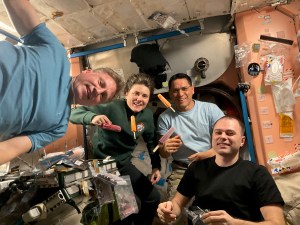
Frank Rubio: You know, actually, really, the food was great. Again, I’m military background, right? So I’m used to eating MREs, and the food is very similar to MREs, although we have another class of food, which is just dehydrated meals. And we’ll rehydrate those, and those are also fantastic. So I really didn’t have a favorite meal. The two that I think have the fondest memory for is we made pizza one night and we basically, you know, had a pre-made crust flown up, and then were able to put pizzas together. And then we were like, “Well, how do we put it in the oven? Right? It’s doesn’t taste like pizza unless all the cheese is melted.” And so we took water bags and basically deconstructed those to use as aluminum foil and figured out a way that we could fit the pizza in the oven sideways, right? The good thing is that nothing, as it melts, it doesn’t run down. And so we were able to kind of fit it in there sideways. And the good thing is it worked out so well and everybody really enjoyed it. So for the next resupply ship, we asked for tinfoil and more pizza fixings so that we could do it again and again. And I think, hopefully, that’s something that crews will continue to do. So that was really special. And then one of my other crewmates, her family flew up charcuterie board fixings. And so we were able to fix that up in space. And again, like for me, my family and I really enjoyed doing that and just, you know, eating a picnic style charcuterie board. And so having that in space was not only tasty, but just brought back some special memories.
Host: You were even able to make making pizza a science experiment in space.
Frank Rubio: Yeah, that’s right.
Host: I know science is such a huge part of your days and part of your mission. So I want to dive a little bit into that. What are some of the most interesting experiments you conducted in space or that you still think about?
Frank Rubio: Well, again, we did over 400, right? So it’s kind of like asking who your favorite child is. Honestly, so much of it is great. And so different categories, right? You’ll do biological sciences, material sciences, combustion sciences, and really anything that has to do with the differences in gravitational forces, right? And so something like, hey, we printed the first 3D human tissue in space, right? And so that sounds amazing, but to me, it was actually really cool to see how cells without the effect of gravity behave differently and maintain their shape differently in microgravity than they do here on Earth. Same thing for I was able to print fiber optic cable, basically, right? And the shape is spherically much more perfect without the effects of gravity when we make it in space. So that was pretty special. Same thing for proteins. Any sort of crystal structure will tend to just have a much more perfect form. And so when you think of either metals or even things like medicines, right? You can just make a much higher quality medicine, which in turn has a better effect biologically on the body. And so the potential’s there.
Now, the one thing that I think a lot of people don’t understand is that we do basic science on station for the most part, right? We don’t necessarily have the end product that comes out. We’re doing research at the basic level that lays a foundation for ground teams or future teams to basically then develop the really neat and special end product that will come from it. So we don’t often get the satisfaction of saying, “Wow, we did this,” but we get the satisfaction of knowing like, hey, we did this one thing that’s going to actually affect a hundred different products back here on Earth and make life better here.
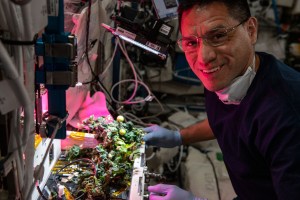
Host: I am so sorry, but I have to ask about the tomato. For those who don’t know, can you explain what happened to the missing tomato and what it was like for it to be found once you returned here on Earth?
Frank Rubio: Yeah. So, you know, we’ve been growing things in space for a while, right? And again, you can imagine that we don’t have access to sunlight first and foremost, because we mostly want to protect the humans, right? And so, we have limited amount of windows, and so you have to recreate the appropriate light exposure for the plants. And then the other thing is, we don’t have soil, right? Soil is very heavy, so we can’t just fly a bunch of dirt up into space, and so we have to figure out the proper nutrition and water content to provide for those plants. And so water tomatoes were important because they are heavy water resource requirements plants, right? And so they were essentially going to allow us to study, hey, what’s best hydroponics, aeroponics? Or is there another method of watering these plants to allow for proper growth?
So Crew-4 had actually started the experiment and then by the time the tomatoes were ripe, we were on board. And I got the privilege of harvesting the first tomato in space and put it in a Ziploc bag, and then continued to work. And I, you know, Velcroed the bag above me. And unfortunately, before the next time I went to look for it disappeared, right? And that happens a lot, not just with tomatoes, but lots of things, tools especially, you think you Velcro them well enough, or you’ve taped them well enough, and it just doesn’t, and you would think it would just float in front of you. But because of those currents of air that we create to create ventilation, it disappears. And not only disappears, but they just magically find ways to go into crevices or nooks. And you can look for something for hours and not find it, right? And there’s so many cables, so many areas where things can hide. And so we did, my crewmates were awesome. They helped me search for those things for hours, and then I spent many hours looking for myself, because again, it’s just a pride thing. The ground team had long ago said, “Hey, don’t worry about it. We’ve got plenty of other tomatoes we can use.” Because again, they weren’t the first, the only two, they were just the first two. And so, they took me off the hook. I just kind of kept myself on it because it was a point of pride of wanting to find the thing. So I looked and looked and never found them, despite my reassurances that I had not eaten it. I think some people were convinced like, “Oh, he ate the tomato.” Which is kind of funny cause if I had eaten it, I would’ve just said, “Hey, I ate it. Sorry, I couldn’t resist.” But lo and behold, months later, and literally after I left, my crewmates found them in the expected decomposed form, but you could still tell that they were tomatoes. And so some people said, “Oh, you’ve been vindicated.” I was like, “Well, that means you didn’t believe me in the first place.” But, no, I get it, right. I mean, I think any of us would be tempted to eat it. So I’m glad they found it.
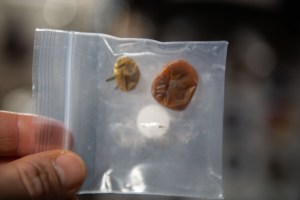
Host: Well, it’s always so interesting too, to hear about working out in space and staying in shape. What measures did you take to stay in shape and stay healthy up there?
Frank Rubio: Yeah, so one of the biggest challenges when we as humans started go to space, as we realized, hey, bone density is really hard to maintain up there, because basically you’re missing the simple things of standing and walking and bearing weight. And it turns out that those forces on your bones are kind of a key component to maintaining bone structure and strength. And so astronauts were coming back even after a couple of weeks, and definitely after a couple months with up to 20% bone density loss, again, this was early on in human spaceflight, and we figured out that, hey, if we increase resistance, right, we can’t recreate gravity. We could, but not on the current station, that we have. But if we just place a load on those bones, we can recreate the same effect. And so the team has done a fantastic job. We have trainers called ASCRs who work with us and develop an exercise plan. And every day, like I said, you have about two hours. About half of that time is for cardiovascular work because that’s also important to maintain. And the other half is for load-bearing weight. And again, you can’t use weights, right, because it’d be pointless. But we have two cylinders that use a vacuum system, and depending on where you put the piston, it drives the load that you’re feeling on the bar. And so you do a lot of squats and a lot of deadlifts, like I said at one point, you know, every day is leg day in space. Like it just because your femurs and your hips are kind of some of the major bones when it comes to bone health and blood production. And so we focus on those primarily.
I was fortunate, I think, just sticking to the exercise plan, I came back at a pretty high level of function. And so what it shows is that the team has done a tremendous job of kind of getting to the right answer and, you know, cause the other thing is you have to fight fatigue and boredom, right? You can’t just go all the time doing max load. And so they’ve done a fantastic job of figuring this out. And I think most of us now, the three of us who last flew about a year have come back at a pretty high functional level. And I think it’s because of that work.
Host: That’s incredible. And then once you get back, what is the physical training like to just get back in shape and continue to remain where you were?
Frank Rubio: Yeah. So despite maintaining that strength and the bone density, your body still feels incredibly heavy when you come back, right? Just 1G. Even though you’ve lived in it for 40 plus years, just taking all that load off for 12 months, you get used to it and it feels kind of nice in some ways to just not weigh anything. And so you come back and it doesn’t feel like 1G, it probably feels like 4G, and you’re just not used to it. And so it takes a little bit. And again, we talked a little bit about the vestibular effects and just how difficult that is. But same thing. The team spends a great deal of time with you, and it just depends on how quickly you readapt. Some people for the first couple days, they can’t do much. And it’s just basically providing the medicines you need to keep fluids down. But for some people, if you’re functional enough, they will start you exercising day one. And you just kind of slowly work your way up. We have some pretty impressive machines here that will offload your weight as much as needed, whether that’s water-based or just an air pressure-based system that we used to offload our weight. And so, you know, some people will offload 90% of their weight, right, to just kind of start slowly. And others of us are able to bear full weight. It hurts a little bit, it doesn’t feel great, but you’re able to just do it without any sort of assistance, and you just work your way up. And after about six months, you’re feeling great again.
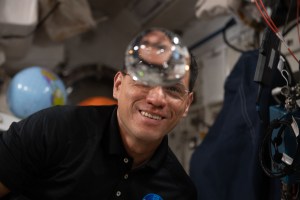
Host: I also wanted to ask you a little bit about some of the challenges on station. You mentioned missing your son’s senior year. What other kind of examples do you have to give of kind of the struggle that can be when you’re up there for that long?
Frank Rubio: Yeah. You know, again, if you’re there for a year, you’re missing one of everything, right? So a birthday, anniversary, all the holidays. And so that’s a challenge, especially in the meaningful moments like anniversaries, you know, Thanksgiving, where you’re used to having it with loved ones, those kind of tend to hit home a little harder. So I think family-based ones are probably the major one.
For a lot of people, I think just being in a confined space can be very difficult, right? The space station, given that it’s in space is incredibly large, right? 2,000-square-feet in space is amazing that we’re able to do that. But that’s a small space. And we say that it’s the size of a small two-to-three-bedroom home, but the reality is it’s all made out of hallways, right? There’s no big room, there’s not a living room or a master bedroom that you can kind of enjoy a large space. You’re always in a hallway-shaped building. And so you have to kind of be able to compartmentalize the fact that, hey, this is home and this is where I’m going to live. And you almost have to block the fact that it is so small. And, for me, especially, I love the outdoors. I love the mountains; I love the beach. I love open spaces and also getting away from other people sometimes, right? And so there you and your six best friends that are in a very small space, so the challenge of being a small space and then also being with the same six people for months at a time. Now, I was blessed with incredibly good crewmates. I’ve said like by far, kind of the number one thing that I had going for me was that one, my family did really well down here on the ground, so that helped me kind of not have that stressor. And then also just having good crewmates, right? Because no matter when you put two humans together, there’s the potential for conflict or differences of opinion. And for the most part, I mean, again, everybody is going to have little things here and there, but no major drama. And for 12 months for that to be the case is pretty incredible. So, I think those are the major challenges. Everything else, you know, for the ground team does a phenomenal job of just working the crew through any problem that you face. And so those things can happen whether you’re there for a week or you’re there for a year.
Host: You’ve mentioned the ground teams several times throughout our conversation. I’m interested to know what it’s like to see Mission Control here on the ground and to work with all the teams here on the ground and how that translates up into space. What is that like to hear the voices and not see the faces and all that?
[Laughs]
Frank Rubio: Yeah. That is actually because you don’t see, you know, they have cameras on you the entire time, but you don’t have cameras on them, right? And so they become a voice. And so you come down here and you put a face to a voice, and it feels weird at first to be honest. But it’s mostly pretty special to know like, hey, these people helped me get through that mission. So you’re mostly giving hugs and lots of thank you’s. And again, it’s just such an incredible team. The flight directors do a phenomenal job. And the cool thing about being there for so long is you get to work with different teams, right? Usually, you have a team that does, you know, a six-month mission where sometimes they’ll do four months and two months. So by just virtue of the fact that I was up there for so long, I got to work with a lot more teams, you know, flew with 28 people and worked with I think over six flight teams. And so it was pretty special to see one that the quality remains the same, right? And for me, that was a highlight, just knowing, wow, we have great people in every single one of these teams. And so the fact that no one team stood out head and shoulders above everybody else was, to me, a plus, right? It just speaks to the quality of the team that we have here at NASA. So yeah, it was neat to come down and give hugs and just be able to put a face to a name.
Host: It sounds like schedules can get pretty repetitive up there. What did you find that you looked the most forward to the next day or the next week? What was it?
Frank Rubio: Yeah, well, you know, again, the structure is the same, right? But you’re doing different things every day. And so different people like different things. When it came to spacewalks, that was probably one of my favorite activities. And so I really enjoyed both when I got to do the spacewalks myself and when my crewmates were going out the door and I was able to help them get out the door. And kind of the way that that team works together is pretty, pretty special. But there are, you know, people who don’t love doing spacewalks, right? And for them, it might be the science experiment that’s really, you know, revolutionary that really makes their day. Maintenance is always fun, right? You never want things to break because you’d like for the space station to work 100% all the time, but something always does break. And so being able to fix something with the limited resources that we have up there, or coming up with a solution that maybe the team hasn’t thought of because you’re just experiencing it from a different angle or a different viewpoint, that can also be pretty special. And so, I think for different crew members, you know, you’d probably get a different answer no matter who you asked but yeah.
Host: What was it like to go out into the vacuum of space for a spacewalk?
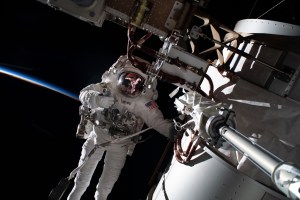
Frank Rubio: Yeah, it’s a little scary, but for the most part, it’s amazing. You know, again, when you first open that hatch and you see the Earth below you, I was fortunate that I didn’t have the sense of feeling like I was going to fall, some people do, and you go out the door, and I don’t know why, but it’s, I like to say, it’s almost a thousand times better than looking at the cupola. And I think it’s just knowing that you’re out there on your own personal little spacecraft, and then your visor just has a much better unobstructed field of view. And then you’re also able to see the structure of the space station much better from once you’re out there with it. And so you’re able to appreciate the fact that you’re hurdling through space much better when you’re out on structure than when you’re inside. So all that adds up to just an incredible experience.
Honestly, I wish we could go out there and just enjoy and just, you know, hang out and enjoy flying around the Earth. But the reality is, out of the seven-and-a-half hours that you’re out there, you probably only have 10 or 15 minutes here and there to enjoy it. The rest of the time, you’re working really hard and you’re focused, you know, probably the most focused I’ve ever been in my life. And so you don’t actually have a whole lot of time to look around and enjoy it. So when you do those few moments that you do, you know, whether it’s because your crewmate is busy doing something or a loss of communication or something else, you take advantage of those few precious moments and you make the most of it.
Host: Well, I wanted to ask you about some of the most breathtaking views or moments that you experienced in space, but maybe it was a spacewalk, or was it something else?
Frank Rubio: Well, the spacewalks definitely were one of the highlights. The auroras are phenomenal, right? Just seeing those from space and from above instead of from below. And the fact that you see both the Aurora Borealis and the Australis, right? So the Northern and the Southern Lights, it’s incredible. The stars, even though you don’t get to see them as bright as you would expect, and again, that’s just because of the Sun’s light essentially blocking out the stars. But it is pretty special to know that you’re seeing the stars from outside of the atmosphere and without any obstruction or effects of the atmosphere on the light of the stars. So that’s pretty special. And then to me, honestly, anytime we had a rendezvous with another vehicle, whether it was with crewed vehicle or a resupply vehicle, and just knowing how tiny that vehicle looks, and then how tiny the space station is compared to the Earth, and knowing the speed that, you know, we’re both flying over 15,000 miles an hour, and the fact that we can get the math right to get those things to come together, anytime I would see a vehicle approaching and just seeing it work flawlessly was pretty incredible for me.
Host: If you could go back to the station just for a quick 24 hours, what would be two or three things you would make yourself do while you were up there?
Frank Rubio: Oh, boy, that’s a great question. You know, so again, I tried, every day I tried to look out the window, even if it was just for a few seconds, right? Cause there are times, believe it or not, even though you’re in space, you can easily get so into your work that you don’t even look out the window, which is crazy, it sounds crazy. But again, I think that’s all of us who can focus on something, you can just kind of lose yourself in that, right? And so I would try to force myself to go look out the window just to appreciate the fact that you’re in space, right? So no matter how bad things are, you can’t lose the fact that you’re getting to do something pretty incredibly special. So I think I would definitely spend a good chunk of that time looking out the window. One of the other highlights of being up there for so long is the fact that you pretty much get to do anything and everything that you can think of in space, right? And so anything that I had thought of like, huh, I wonder how this would work. I pretty much had the time to do that. So there aren’t a whole lot of things that I, like now, I certainly hope to go back to space and continue to contribute to the mission. But I don’t know, I’m fortunate in that there’s not many things that I’m like, “Oh, I wish I had done this, or I had done that differently.” So yeah, which is kind of neat to be able to say that.
Host: Yeah, I would think a year you’d have a lot of time to check your bucket list boxes.
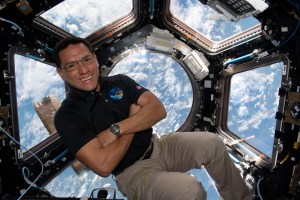
Frank Rubio: Well, yeah, you would think so. But again, you are so busy up there, right? And it is such a privilege and crew time up there is so valuable. They maximize the opportunity to use you. And so you don’t have as much free time as people might think. But at the same time, you have ample time to do the things you want.
Host: These long-duration missions, just like yours are so crucial for future space exploration. How do you see that your mission will influence the planning and execution of those in the future?
Frank Rubio: Yeah, I think just continuing to provide data points, right? The difficult part about humans, we are both the strength of a crewed mission and sometimes the weakness of a crewed mission, right? Because we’re adaptable, we can think outside the box and we can make things happen, right? So, I think, and probably the most importantly, we inspire others, the rest of humanity, by having humans on these missions. So I think it’s incredibly important to do that. On the flip side, we are still human, right? And so we bring not only our strengths, but our weaknesses. And so continuing to look at, hey, how medically, you know, how are all of our major systems affected by life and space? Because ultimately, we are made to be in 1G, right? And so, you can only live in space so long and maintain 100% health. So that’s really important that the psychology of it is also important. And then the crew dynamics, right? That’s incredibly important. And I think the one thing that we continue to see is just how important it is to get not just a crew up there, but the right crew, right? And it’s not necessarily always the best individuals that go up there, but it’s the best team will ultimately do the best job at getting the mission done. So yeah, it’s a different data point, right? And I’m glad that more and more of us have been able to get to this milestone or close. And the team here on the ground continues to gather that data. And then whoever is going to go to Mars or, you know, live for a year on the Moon, will have this groundwork that we’ve all created to help them be more successful.
Host: What advice would you give to an astronaut preparing to for a yearlong mission like yours?
Frank Rubio: Well, I think we all kind of understand how important it’s to kind of get your ducks in a row right here on Earth, because you are completely separated from life here on Earth in the sense, you know, you have great communication, you have telephone calls, you have video calls, but even it’s somewhat different from my military deployments in that when you’re at war, if there’s a huge crisis, I think in the back of your mind, you know that they’re going to do everything possible to get you home to deal with that crisis. It may not be immediately, but as soon as the mission allows that, that can’t happen. For space, while hypothetically they could do the same, the reality is, you know, the mission is so critical and it’s so difficult to both get up there and come back down that you just have to have your systems here on the ground, self-sustaining. And so you have to be able to separate yourself for that. So I think that’s important. I think we all understand that no matter how long you’re going to be up there, investing in that crew dynamic, right? As much as you can, we are also incredibly well-trained, technically, right? We all know how to do the maintenance; we all know how to do the spacewalks. And that stuff is no problem. The team does a fantastic job of getting us ready for the mission. But what they can’t really do is the crew dynamics and the interpersonal skills. And so we all very much emphasize that, and I think I would just, that’s not something new, right? We all know that. But I would just reemphasize how important that is. And I think that’s important for any high-functioning team, whether they’re in space or here on Earth, is just like one, not only, working on how well you get along, but also getting to know how each person ticks, right? And their strengths and their weaknesses and how they approach problems and how they deal with stress. All those things will help, whether you’re the leader or the follower, you know, cause inevitably, roles change. Just the more you know about that, I think the better you’re going to function and then the better you’re going to accomplish the mission.
Host: That’s great. And in closing, I just wanted to ask you, how has this experience changed your perspective on life and our planet?
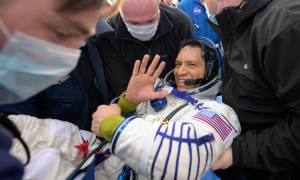
Frank Rubio: Well, it gives you a deeper appreciation, I think, for how special our planet is. You know, we all know the math and the science of essentially, how far away things are. But when you’re up there and you can actually see a little bit better how really alone the Earth is because everything else is just so far away, you start to appreciate, okay, we really have a special thing here and we really need to take care of it and steward it, right? I mean, it’s important to continue to improve quality of life here on Earth. We can’t throw all of our resources into just maintaining our planet. But I think we can do both. I think we can improve quality of life for humanity, right? So that we, as humanity, can strive for even bigger and better things. But then appreciate the fact that hey, yes, you know, talking about colonizing Mars is great, but that’s going to be decades, if not centuries, away cause human spaceflight is really difficult. And so just as important as to take care of the resources we have here on Earth to make sure that we continue to thrive and enjoy this beautiful planet. And so, I think you just get a really deep appreciation for that when you’re up there.
Host: Well, Frank, I really enjoyed talking with you today about your mission and your recovery. Thanks so much for joining us.
Frank Rubio: Yeah, Courtney, thank you so much. And again, you’re one of the team members that made the mission special, you and your team. So, thank you guys for what you do, and I look forward to chatting again in the future.
[Music]
Host: Thanks for sticking around. I hope you enjoyed our conversation with NASA astronaut Frank Rubio today as much as I did. Check nasa.gov for all of the latest things on the International Space Station. If you’re into podcasts, you can check them out at nasa.gov/podcasts. On social media, we are on the Johnson Space Center pages on Facebook, X, and Instagram. You can also use #AskNASA on your favorite platform to submit your idea and make sure to mention it’s for Houston We Have a Podcast. This episode was recorded May 22, 2024. Thanks to Will Flato, Dane Turner, Abby Graf, Jaden Jennings, and Gary Jordan for their support in enabling this recording. And of course, thanks again to Frank Rubio for taking the time to come on the show. Give us a rating and feedback on whatever platform you’re listening to us on and tell us what you think of our podcast. We’ll be back next week.
This is an Official NASA Podcast.

